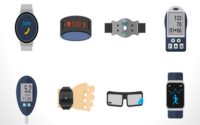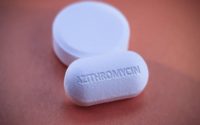New Era of Diagnostic Laboratories: From Preventive Care to Wellness Approach
While through 2020 to 2021, the COVID-19 pandemic plagued the healthcare sector with various challenges. Social distancing in the lockdown scenario, lack of skilled technologies, management of large volumes of data, and keeping up with extensively hectic research and development led to tremendous pressures as the country struggled to come to terms with the global pandemic. Glaring gaps in the diagnostics industry, one of the crucial elements of the healthcare sector, were dramatically exposed as the pandemic reiterated the need for timely and mass-scale testing to stop the transmission of the virus. Diagnostic labs met with a huge challenge in catering to a deluge of urgent doorstep sample collection, quick turnaround time, and speedy delivery of the report. On the bright side, the COVID-19 pandemic impacted the level of health awareness among the population related to early diseases diagnosis and created an increased need for quality preventive healthcare. Diagnostic findings influence more than 70% of the decision-making in healthcare for disease treatment, management, and preventive care. Thus, market players involved in diagnostic services are devising innovative techniques and newer tests, leveraging upgraded medical equipment to accommodate the burgeoning volume of tests while maintaining quality and efficacy. Consumerization, automation, and consolidation are the latest trends shaping the consumer-friendly models of diagnostic care delivery.
India diagnostic labs industry was valued USD12.3 billion in 2021 and is expected to reach USD25.6 billion by 2027 due to high incidences of lifestyle disorders like diabetes and cardiovascular diseases and an overall rise in the spending power capacity of people among all strata of the society. The diagnostic lab industry is segmented into large chains, standalone centers, and hospital-based laboratories based on the provider type. Accounting for 43.7% of the total market share, standalone diagnostic labs dominated India’s diagnostic labs market in 2021. India is emerging as one of the attractive medical tourism hubs due to low medical costs and effective treatment options. Additionally, growing awareness and acceptance of personalized medicine and companion diagnostics are driving the growth of the India diagnostic labs market. Furthermore, an announcement for the creation and expansion of public health labs in the Union budget 2022 to enhance diagnostic services across 11 high focus states and 730 districts in India is expected to fuel the India diagnostic labs market in the coming years.
Government Initiatives to Boost Diagnostic Lab Ecosystem in India
Under the AB-PMJAY scheme, the Ministry of Health and Family Welfare is planning to explore options for providing quality diagnostic services from certified laboratories to beneficiaries. The government has announced the establishment of 150,000 health and wellness centers that offer diagnostic services to ensure sufficient coverage and reduce the burden on secondary and tertiary care. Seeking the private sector’s support, the government plans to provide special attention to underserved areas, ensuring the availability of skilled healthcare professionals. The Indian medical diagnostic industry will be playing a significant role in the prevention and wellness, with 41% of the expenditure being spent on diagnostics. An effective PPP model within the wellness outreach will help improve the overall vision of health for all.
Under the flagship program of PM Narendra Modi, the health ministry plans to establish more than 134 types of diagnostic tests for free at the district level by 2025. In addition, the program, with an outlay of INR64,180 crores, is aimed at establishing integrated public health labs in all 730 districts. At the district level, 80 Viral Diagnostics and Research Labs and 15 New Bio-Safety Level III laboratories will be operationalized at the state level.

Rising Collaborations in India Diagnostic Labs Market
Advancements in molecular and genetic technologies and increasing patient requests have created a need for a personalized laboratory-developed test. Organizations that provide such kinds of tests require strong cross-functional collaborations between the revenue cycle and the lab for up-skilling, technology optimization, and clinical knowledge within the medical fraternity. The collaborations will help health providers maintain lifelong knowledge and skills for unique, niche, and critical lab tests for accurate diagnosis, especially in super-specialized fields of medicine. In February 2021, SRL Diagnostics, one of the leading players in the India diagnostic market, collaborated with US-based Mayo Clinic Laboratories to facilitate initiatives for more enhanced diagnosis and improve physician’s ability to care for patients. In March 2022, Tata Medical Diagnostics (TataMD) entered into a clinical collaboration with Anderson Diagnostics & Labs (ADL) to advance in the diagnostic space of COVID-19.
The Indian Council of Medical Research (ICMR) has planned to collaborate with IITs to set up centers of excellence for commercialization in the medical devices and diagnostics sector. This has been done to ensure that products and technologies are advanced enough to synergize with the requirements of the National Health Mission, Ayushman Bharat, and other public health programs by the Government of India. The integration of ICMR and IIT will help boost technology development and expand the commercialization cycle to create a much larger health impact and develop need-driven, affordable, and inclusive healthcare solutions, particularly for middle- and lower-income segments.
Technological Innovations to Drive the Market Growth
Advances in biology, disease and molecular medicine have put laboratory medicine at the forefront. Emerging technologies such as biosensors, lab-on-a-chip, wearable devices, and Point-of-Care diagnostics are some of the factors driving the growth of the India in-vitro diagnostics market. As healthcare and laboratory medicine are converging, the need for an improved precision call for continuous optimization is increasing. Thus, market players in the diagnostic labs are incorporating new and improved technologies for enhanced patient experiences, reduced ever-increasing workload, and lower healthcare costs. Artificial intelligence replaces labor-intensive and time-consuming procedures with quick and remote-accessible and real-time solutions to provide accurate diagnoses. Internet of Medical Things (IoMT) has remained a crucial part of the development of various diagnostic services, which require little to no intervention. In recent years, major initiatives to integrate genetic knowledge and processes into existing clinical workflows would ensure physicians communicate with patients in a consistent and actionable manner.
Automation has become common in medical laboratories as manual operations can be time-consuming and inefficient. Modern diagnostic labs are turning to total laboratory automation to streamline operations. Total Laboratory Automation (TLA) system replaces human intervention in preparing and transporting specimens with robotic devices. Multiple advantages of TLA include reduced costs for laboratory testing, fewer human errors in specimen handling, faster turnaround times, improved overall process control, enhanced quality, and lab flexibility.
Challenges
India’s diagnostic industry has been facing issues related to a lack of skilled talent and tech infrastructure coupled with connectivity issues required to improve services. Besides, diagnostic businesses in tier-2 and tier-3 cities and remote areas provide only basic testing and pricing pressure issues. Hence, local standalone players need to consolidate with big market players to have the required infrastructure to provide diagnostic services and reduce the demand-supply gap. Lack of skilled IT professionals and allied health professionals and lack of robotic service equipment might hinder the growth of the India diagnostic labs market in the coming years.
The Future Outlook
In terms of quality, precision, and affordability, India diagnostics solutions are considered to be one of the best in the world. As more diagnostics manufacturers would make efforts to make diagnostic services cost-effective and accessible in the remotest corners of the country, the diagnostic lab segment will undergo a massive transformation in terms of digitalization and technological innovations. Enhanced awareness of preventive and curative healthcare will accelerate demand for diagnostic services driven by marketing communication aspects. Additionally, lucrative offers provided by clinics and hospitals for health tracking applications, preventive healthcare packages, booking a path lab test, online reports, and consultations are expected to propel the growth of the India diagnostic labs market.
According to TechSci Research report on “India Diagnostic Labs Market By Provider Type (Stand-Alone Labs, Hospital Labs, Diagnostic Chains), By Test Type (Pathology v/s Radiology), By Sector (Urban v/s Rural), By End User (Referrals, Walk-ins, Corporate Clients), By Region, Competition Forecast & Opportunities, FY2027”, India diagnostic labs market is anticipated to grow at a significant CAGR of 12.25% through the forecast period. The market growth can be attributed to the rising incidences of various diseases and growing geriatric population. Additionally, rising healthcare awareness among the population and expansion of various diagnostic chains and hospitals are expected to drive the growth of India diagnostic labs market.
According to another TechSci Research report on “Vietnam Diagnostic Labs Market By Provider Type (Hospital Based Diagnostic Labs v/s Stand Alone Diagnostic Labs), By Test Type (Pathology v/s Radiology), By End User (Referrals, Walk-ins, Corporate Clients), By Region, Competition Forecast & Opportunities, 2017-2027”, Vietnam diagnostic labs market stood at USD1.08 billion in 2021 and is anticipated to grow at a CAGR of 6.79% during the forecast period. The market growth can be attributed to the increasing demands for early disease detection and advancements in healthcare infrastructure in the country.



